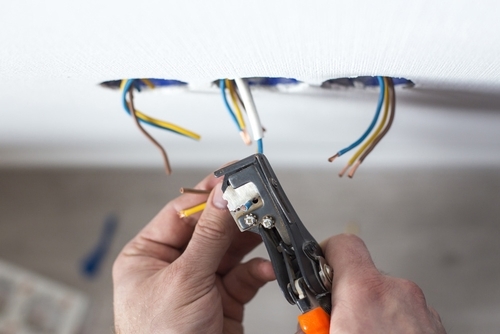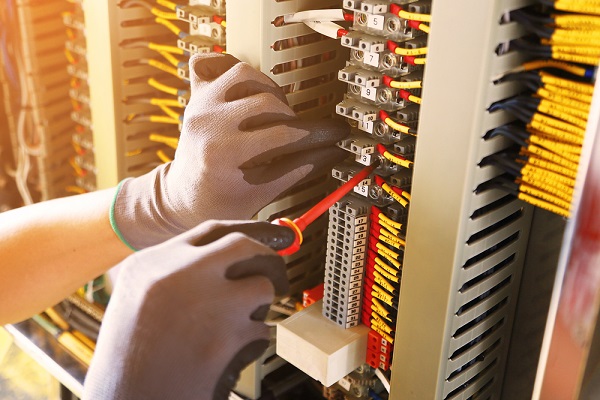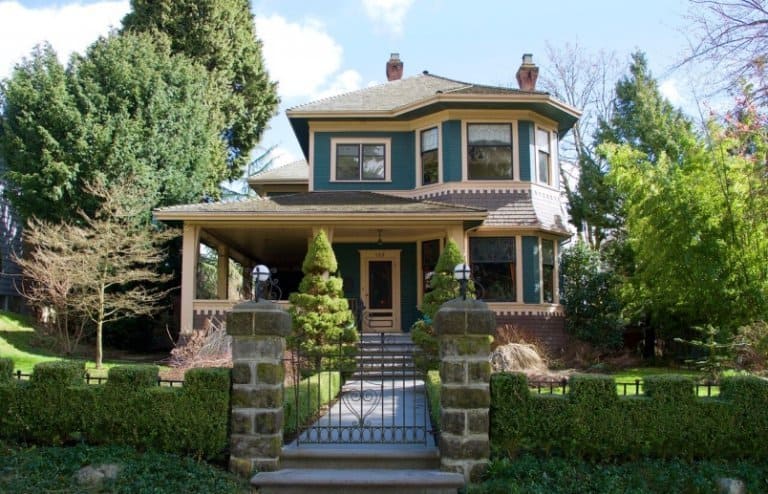Reasons You May Need to Update Electrical Wiring in an Old Home
Did you know that electrical problems were the cause of 6.3% of all residential fires? Your home is especially at risk if you live in an older house with old electrical wiring. If you’re hesitant to update electrical wiring in your home, here are 5 reasons why you may reconsider that decision.
For houses with outdated wiring, the risk is especially high. If you own an older home, aging and dangerous electrical systems could be lurking behind your walls and putting your family at risk. You may be hesitant to update electrical wiring in your home, unsure if it is worth the cost or hassle. If so, here are five reasons why you should consider replacing and repairing your wiring.
Keep on reading to learn more!
Improve Your Safety
If you live in an older home, your outlets may only have two prongs instead of three. Most modern appliances have the third prong, which can pose a problem for homeowners. Two-prong outlets, which can’t provide enough power, can cause fuses to blow. Many devices or appliances plugged in simultaneously can increase the risk of blowing. This is true for energy-intensive fixtures like refrigerators because fuses can easily overload. Old-fashioned outlets are especially prone to power surges. The third prong of modern plugs serves as a connection to the ground wire in your home electrical system. This grounding conductor protects homes from surges of power.
Give Yourself More Power
Victorian homes have minimal outlets, designed for a few electric lights to replace the oil lamps and candles of old. An old home that has never had an electrical renovation uses way more power today than it was designed for. They are incapable of accommodating the needs of today. Homes from this period service 100-150 amps of electricity. A modern family’s energy consumption typically needs 200 amps of electrical service to meet their needs. Upgrading your electrical capacity to 200 amps will allow you to run a high number of appliances without the risk of overloading. You’ll be more prepared for future product innovations and capable of powering them.
Decrease Your Fire Risk
Electrical malfunctions in homes account for 51,000 fires each year. These fires result in an estimated 500 deaths and 1,400 injuries. Property damages from home electrical fires cost a staggering 1.3 billion dollars. Faulty outlets with only two prongs can be overloaded, causing sparks to erupt from blown fuses. Loose wiring in switches is also often the source of electrical sparks. Knob-and-tube wiring can come loose and electrify the wood, making surges that can cause wooden structures of the home to catch fire as well.
Houses built before the advent of modern appliances are especially prone to fire risk. They are not wired for high-powered electronics such as televisions or computers. The demands of multiple items plugged in at once can easily overwhelm their wiring, causing blown fuses and potential sparks.
Even homes built as recently as 25 years ago may need upgrades to reduce the risk of electrical fire. Be wary if you use extension cords or power strips to expand available outlets. You may be taxing your electrical system beyond its original design.
If you supplement your heating system with space heaters in winter, these heaters can increase your fire risk. Not only can they ignite nearby materials on their heating coils, but their heating elements also need a lot of electricity to heat them.
Protect Yourself From Surges
Power surges are one of the most potentially damaging risks to the electrical components in your home. Whether it be from lightning, downed power lines, or power station fluctuations, power surges can cause serious damage to devices in your home.
Computers can suffer memory loss, fried components, and even complete failure. Devices such as TVs and gaming systems are also extremely vulnerable to power spikes.
Modern electrical systems can include whole-house suppressors. These can protect your home from surges of 40,000 amps or more. Used with surge protectors, these upgrades can keep your electronics and appliances safe from power spikes.
Make Your Home More Convenient
Antique wiring was designed for utility, not convenience. If you own an old house, you might find yourself regularly frustrated with your lack of outlets.
An upgrade to your electrical wiring can include having additional outlets installed in your home. Modern, three prong outlets can be added to any room that needs more electrical access, such as your living room or even your garage. Spreading out your electric use between multiple plugs can also prevent the taxing of any one power source.
You may see a decrease in your homeowner’s insurance when you upgrade your electrical system. Many providers require that all electrical systems meet building codes. If your home still has knob-and-tube wiring, you might find it hard to get an insurance policy at all.
Today’s home buyers are also looking for convenience in their potential purchases. Adding more outlets can add attractive benefits to your home if you’re looking to sell in the future. You may add significant value to your home by making sure it is up to code for future inspections.

How Can an Electrical Upgrade Increase the Resale Value of Your Home?
Considering postponing electricity upgrades at home as you plan to market it? Hold on! The sale of a house with dubious cables and electrical systems is a bad idea. What should you replace before selling and what can you leave to the buyers’ judgment?
ENTICING ELECTRICAL UPGRADES FOR YOUR HOME
These upgrades are vital to reduce the need for endless price negotiations after the home inspection and help get a better price or higher offer in today’s tight housing market. Ask our electrician in OKC to know where you can upgrade your electrical system.
UPDATING WIRING SYSTEM
Tube and knob wiring, are a significant reason for domestic fires that were installed ages back and a pain for both homeowners and buyers. The entire home should have modern strong copper wires and sufficient grounding for safety and for managing the massive electronic load of today’s homes.
UPGRADING OLD ELECTRICAL SERVICE
Your home should be wired for 200 amps, not traditional 60-amp older homes that do not support today’s homes with the sheer number of electric appliances and electricity use.
GROUNDED OUTLETS
There is nothing like dusty two-prong outlets that says it won’t satisfy today’s high-tech buyers. It is the digital age, and today’s home buyers want plugs and wiring, on which they can depend. It must be possible for all outlets to accept properly grounded 3-pronged plugs. It may not matter if the old TV is surged, but buyers are concerned about their sensitive and costly smart gadgetry.

Reasons Why You Should Upgrade Your Home’s Electrical System
Keeping an old wiring system or having insufficient amperage can pose danger to your home. Here are some indications it is time to upgrade your electrical system:
You Live In An Old House
Older homes may be charming and unique, but they are often full of electrical issues because just a few decades ago, families did not have the entertainment centers, extra appliances and all the electronic items we have today which translates to higher electrical loads. When you lose power whenever you run your microwave and coffee maker at the same time, this could be a sign that it is time to upgrade your electrical system.
Just adding new wiring may not work. Electricians say this can lead to what is known as spaghetti wiring, a mess of potentially dangerous wires behind your wall. While it is possible to salvage old wires that are still intact and just get rid of the frayed and aluminum wiring that was installed in the 1960s and 1970s, it is more cost effective and safer to rewire the entire property. Old wiring systems do not balance the electrical loads across the circuit as well as the new ones.
You Are Buying New Appliances
Having newer appliances at home that draw larger volumes of energy can exceed your property’s electrical service capacity. In the 1960s, building usually had 60 amp services but due to the growing power demands, the current minimum standard designated by the National Electrical Code for most residential properties is 100 amps. Many new houses are now installed with 200 amp services in anticipation of future electricity needs.
Insufficient electricity can strain appliance motors. Appliances can heat up and easily get damaged when appliance motors do not receive enough power. Running appliances with insufficient power can shorten their lifespan and this could become more expensive for you in the long run.
You Are Renovating Your Home
You may also need to upgrade your electrical system if you are upgrading your home. If you are turning your attic into a game room, remodeling your kitchen, or constructing an additional bedroom, these changes can likely lead to increased electrical use or require rewiring.

The Insurance Issues About Wiring
Some insurers refuse to cover or renew policies on residential properties with 60-amp electrical service, aluminum wiring or knob and tube wiring. Provincial safety codes don’t impose a legal requirement to upgrade or replace these services.
A 60-amp service or a service with knob and tube or aluminum wiring is not necessarily an issue if it is properly installed and maintained.
We started with the foundation work
We had all our panels updated and the downstairs bathroom rewired/updated, and the upstairs master bath rewired/updated. This is what we’re calling Phase 1! Whooot! Completed. It was not as traumatic as I thought. And: I can safely plug in a blow dryer. I know, the excitement. Calm down now Susan! We also upgraded to 300 amps, so as we make additions and changes throughout the years, we’ll have plenty of amps to work with.
Here’s my advice if you need to have electrical work on your old home done:
Find a really good electrician. Like really good. Make sure they have experience working on old homes and are licensed.
Make sure your electrician has experience working with plaster walls. When we interviewed electricians, one said they were going to cut horizontal channels in our plaster walls. Ummm, no. Uhhhh, the plaster walls will FALL DOWN if you cut horizontal. Moving on. I am AMAZED that we had not one hole in our walls from running new wire. That takes talent. NOT ONE HOLE.
Beware of alarmists. These are the people who make it seem like end of days if your house wasn’t built in the last 3 years. I’m so over these people and have found they have no idea what they are talking about 98% of the time. If someone says something to you that sounds off, research it. Ask a professional. That said, I’ve talked to professionals that are alarmists too. Beware. There should be a practical solution for most problems.
Ask your electrician how they will approach the project. This was super helpful during the interview process and helped us understand the work ethic and personality of the electrician, and helped the electrician ballpark how much time it would take to complete the job.